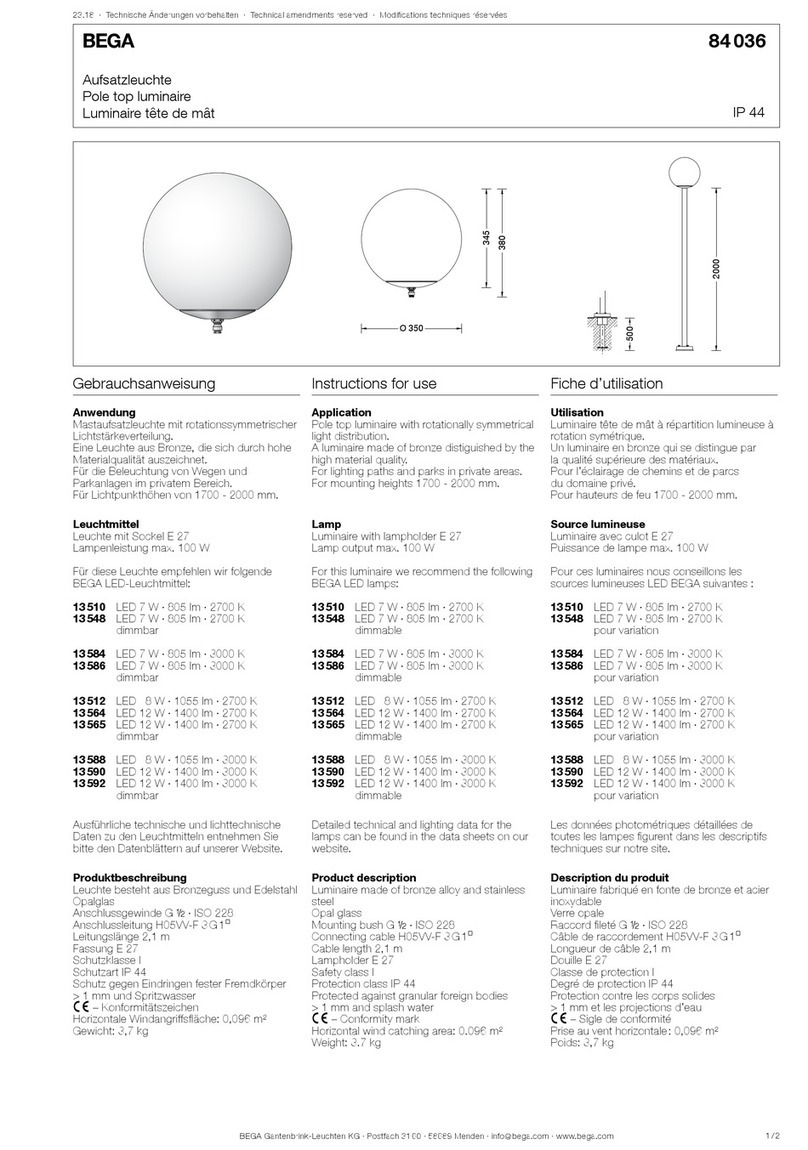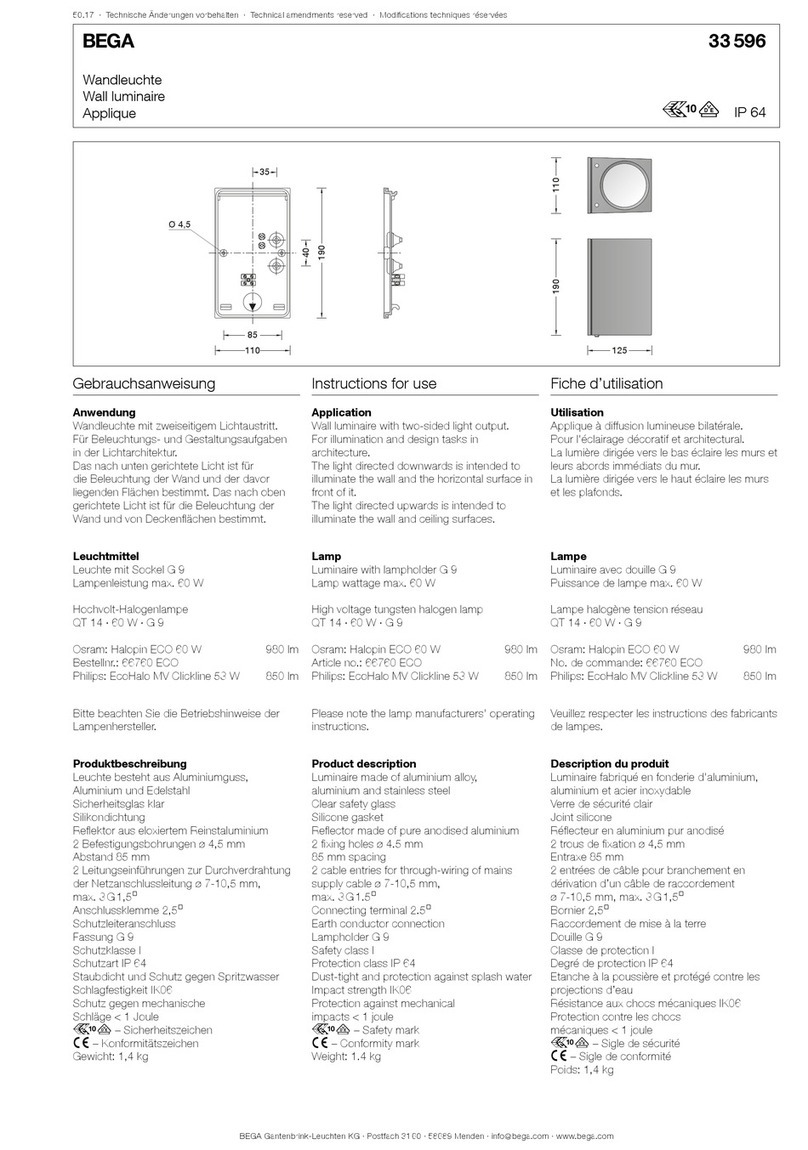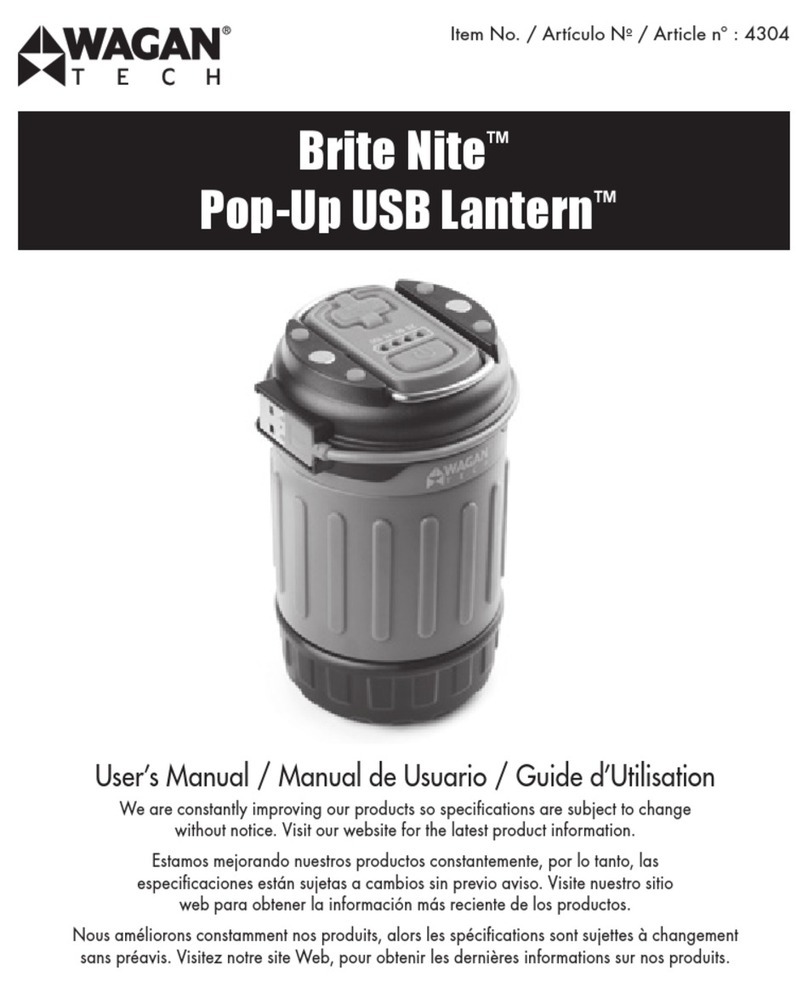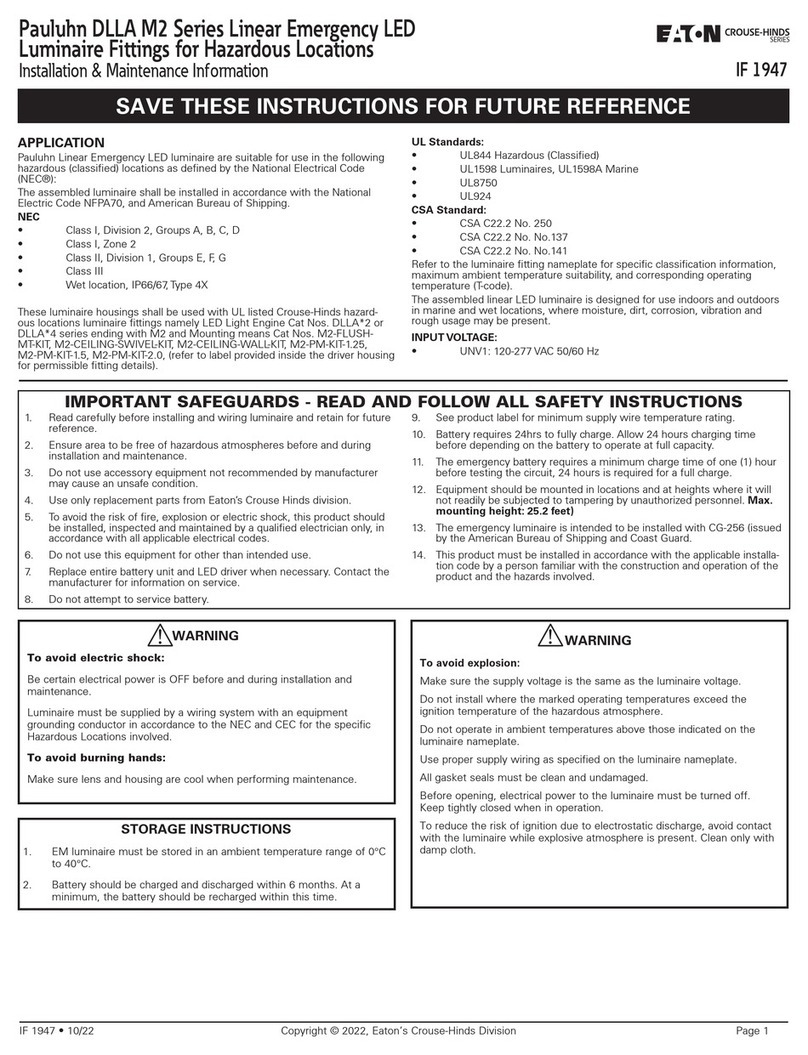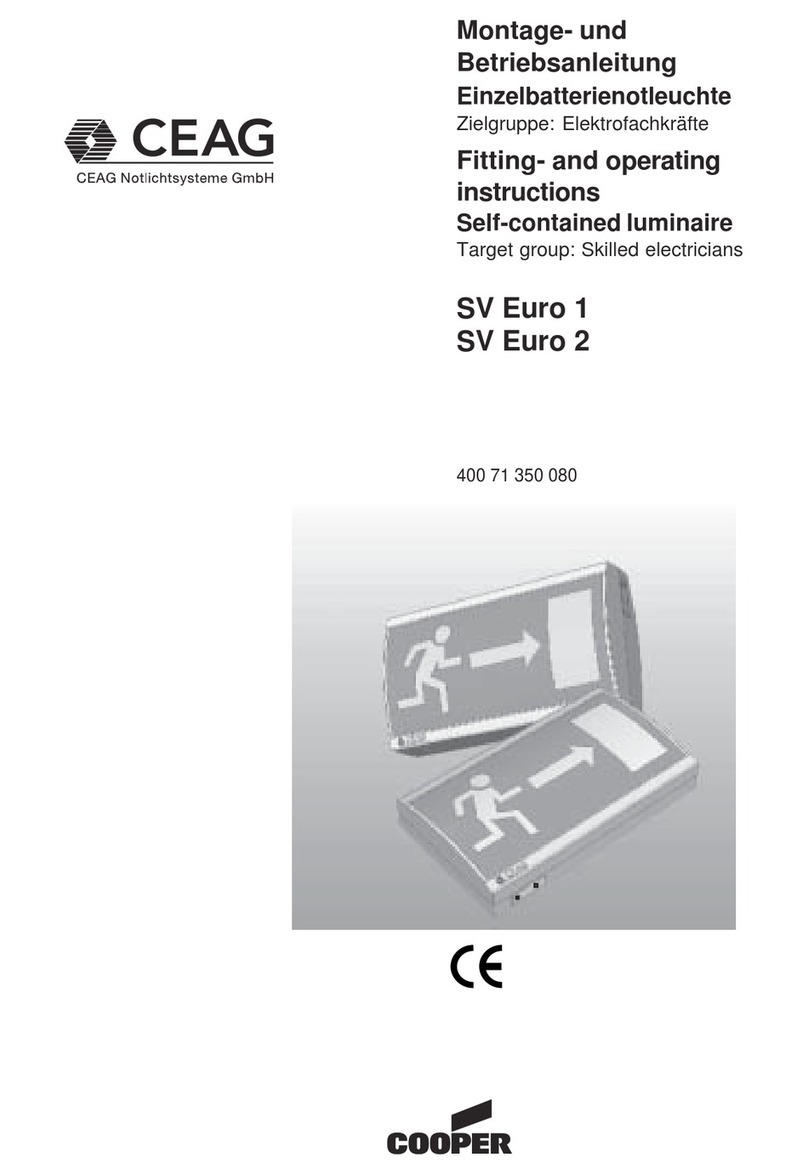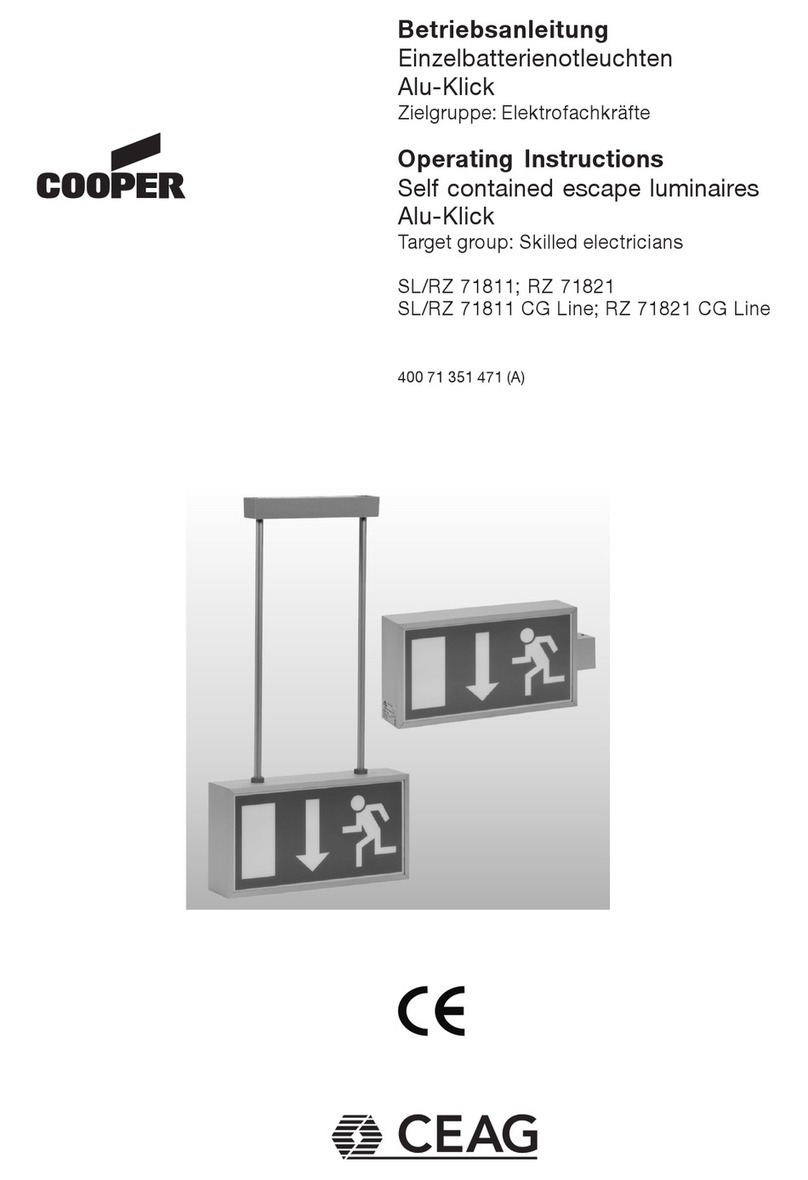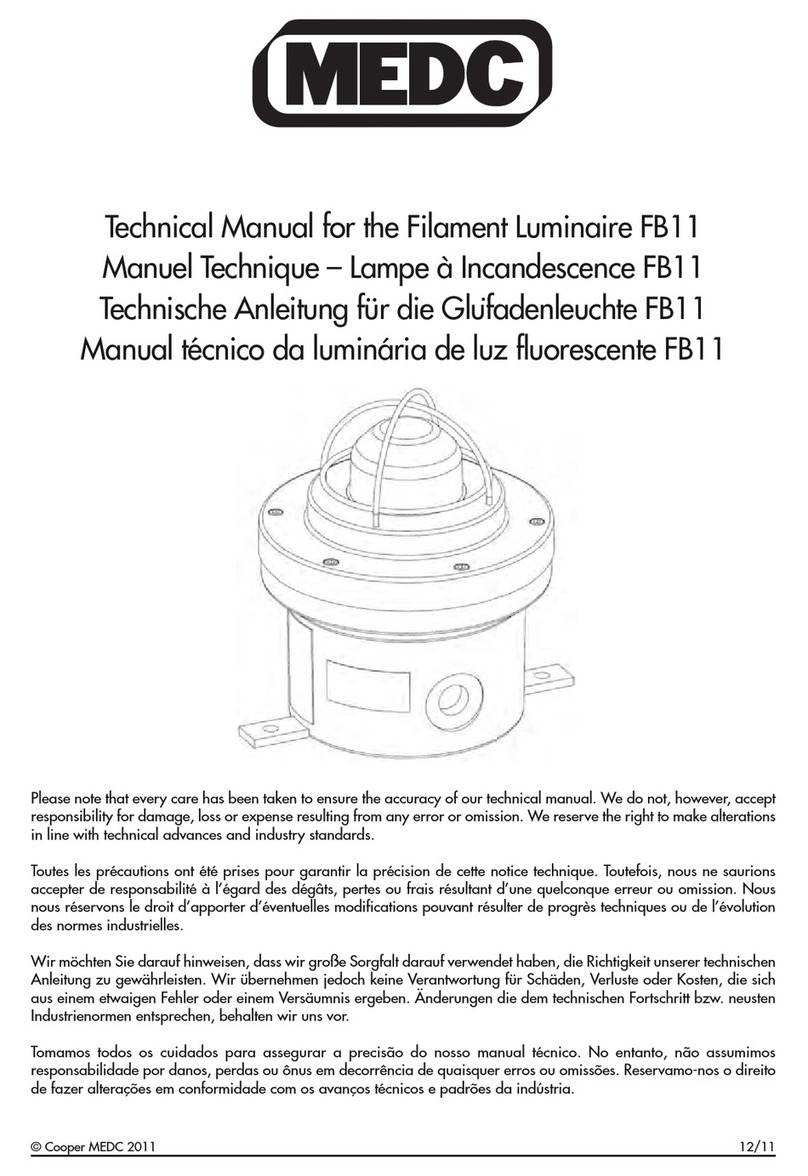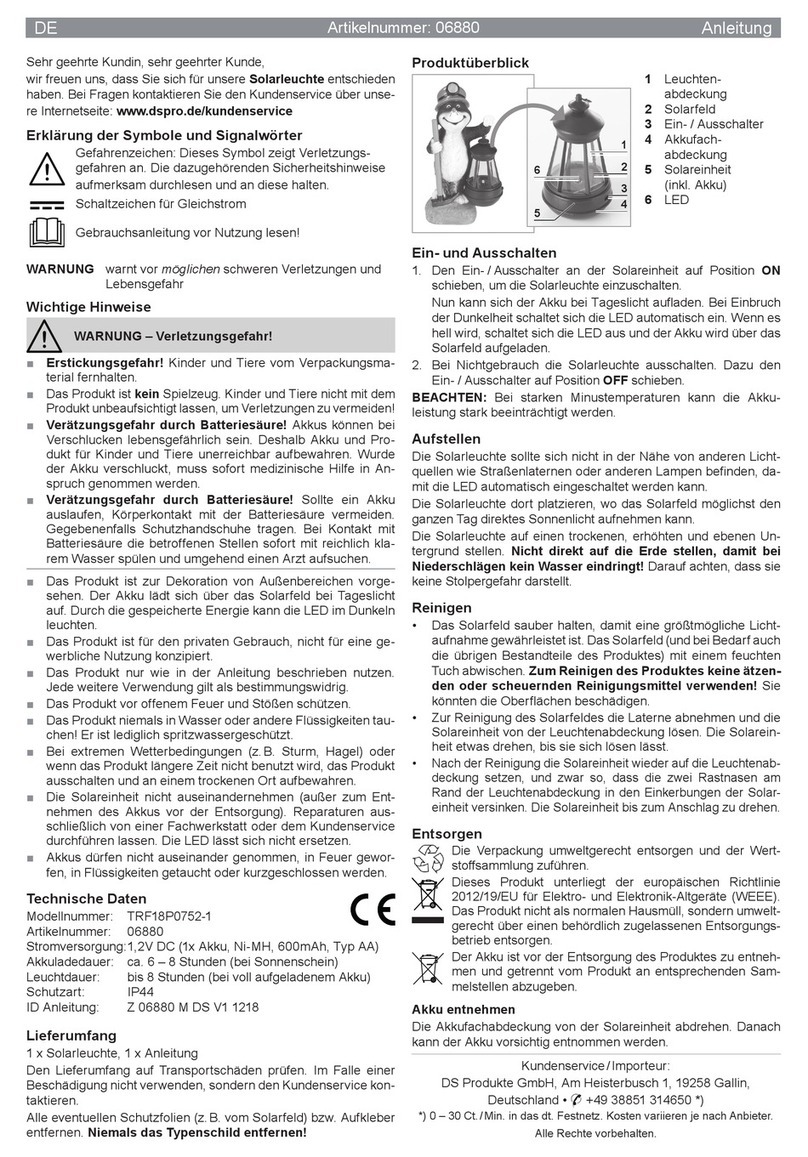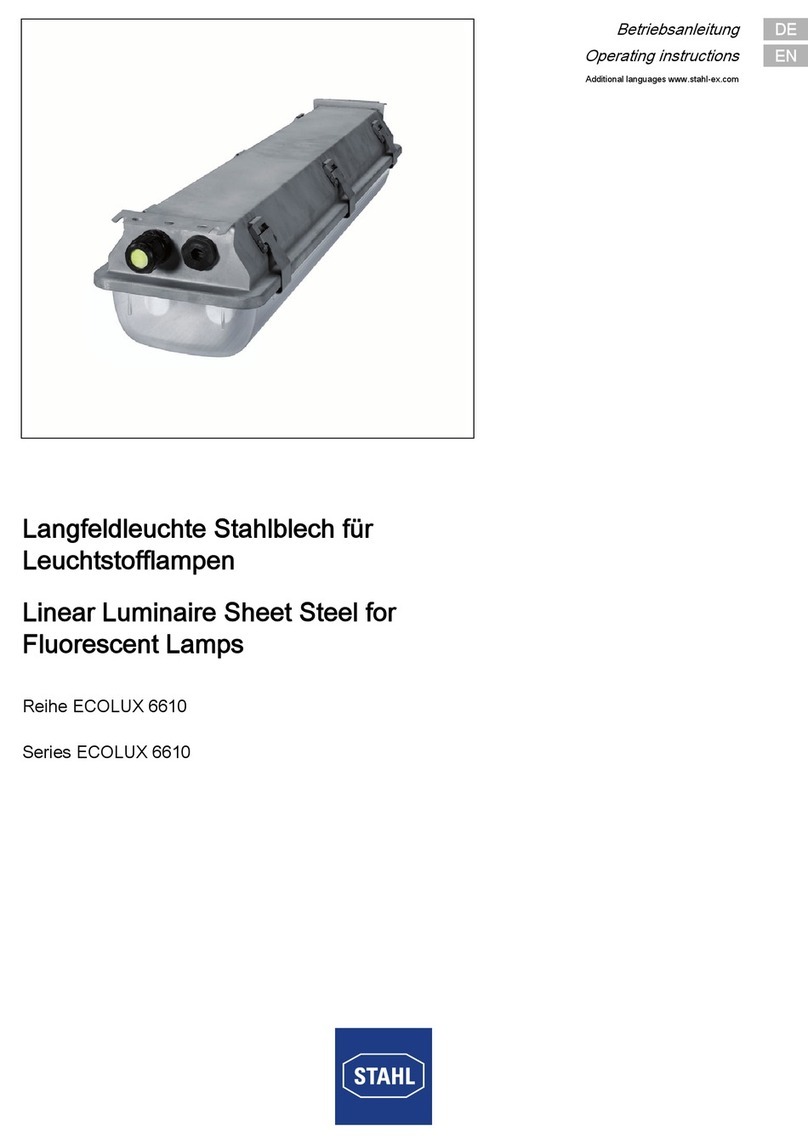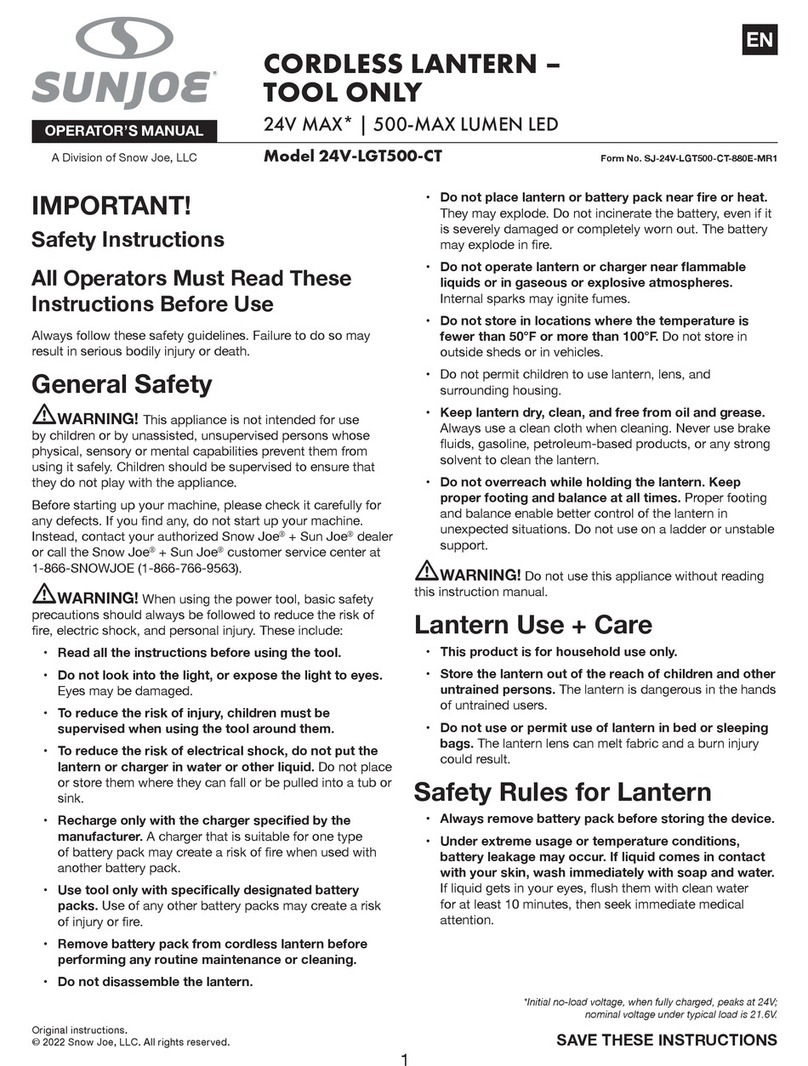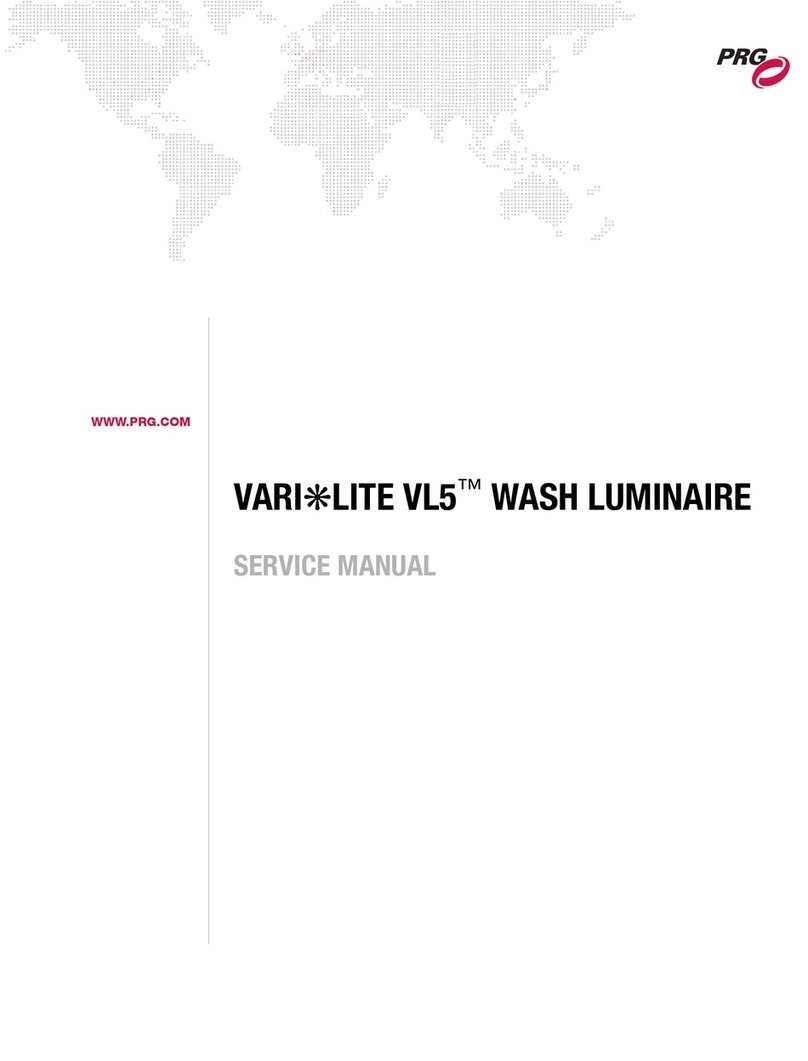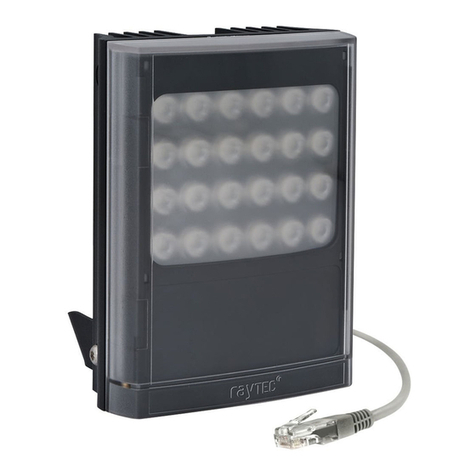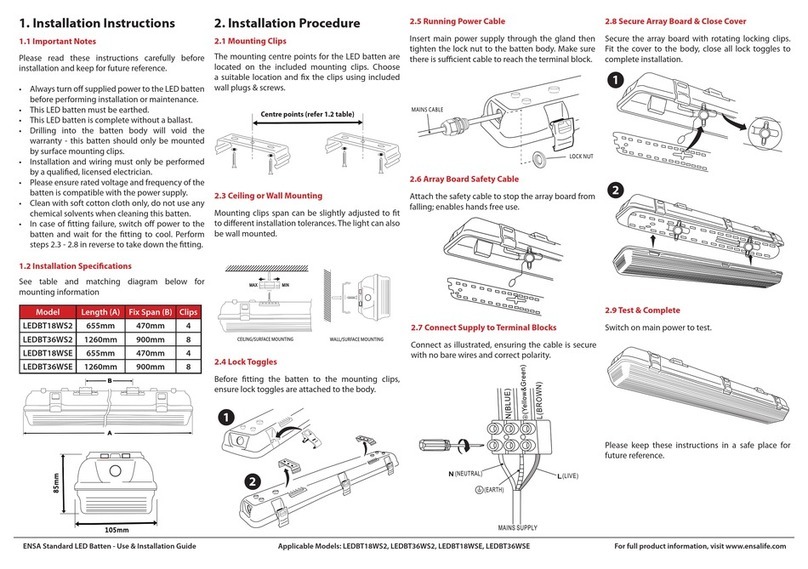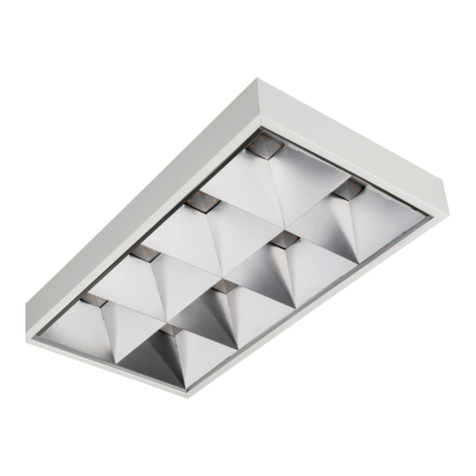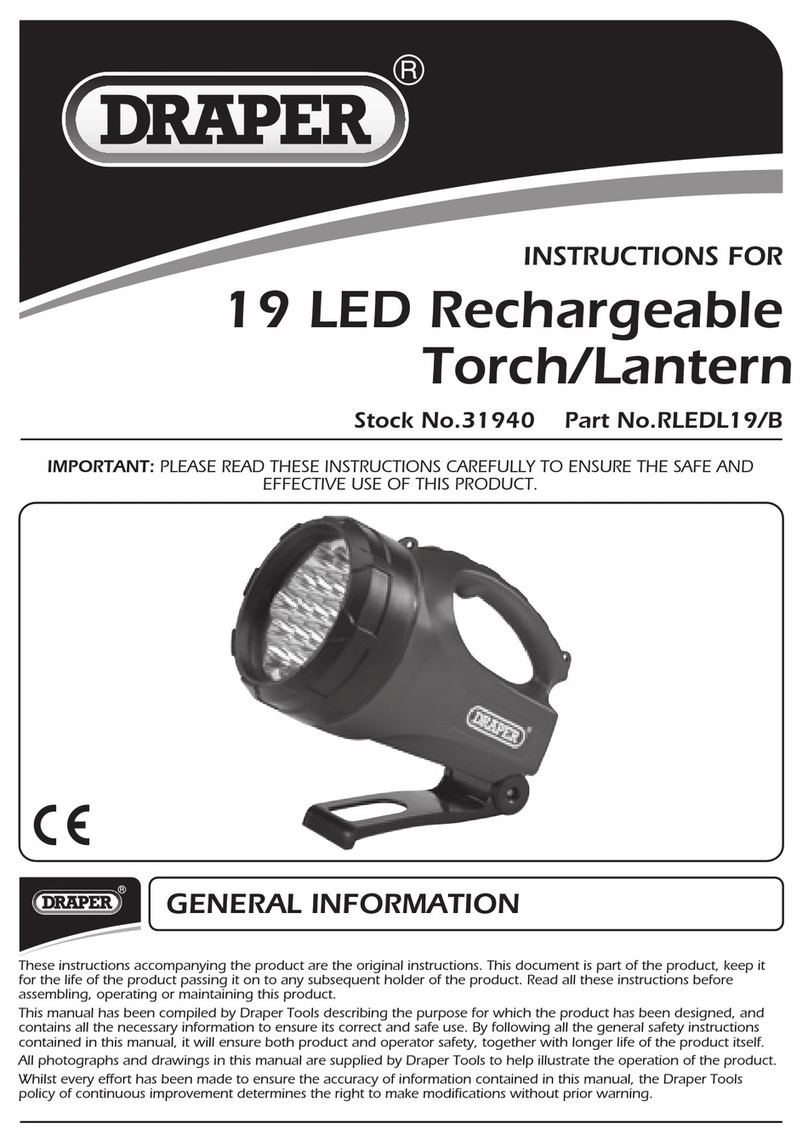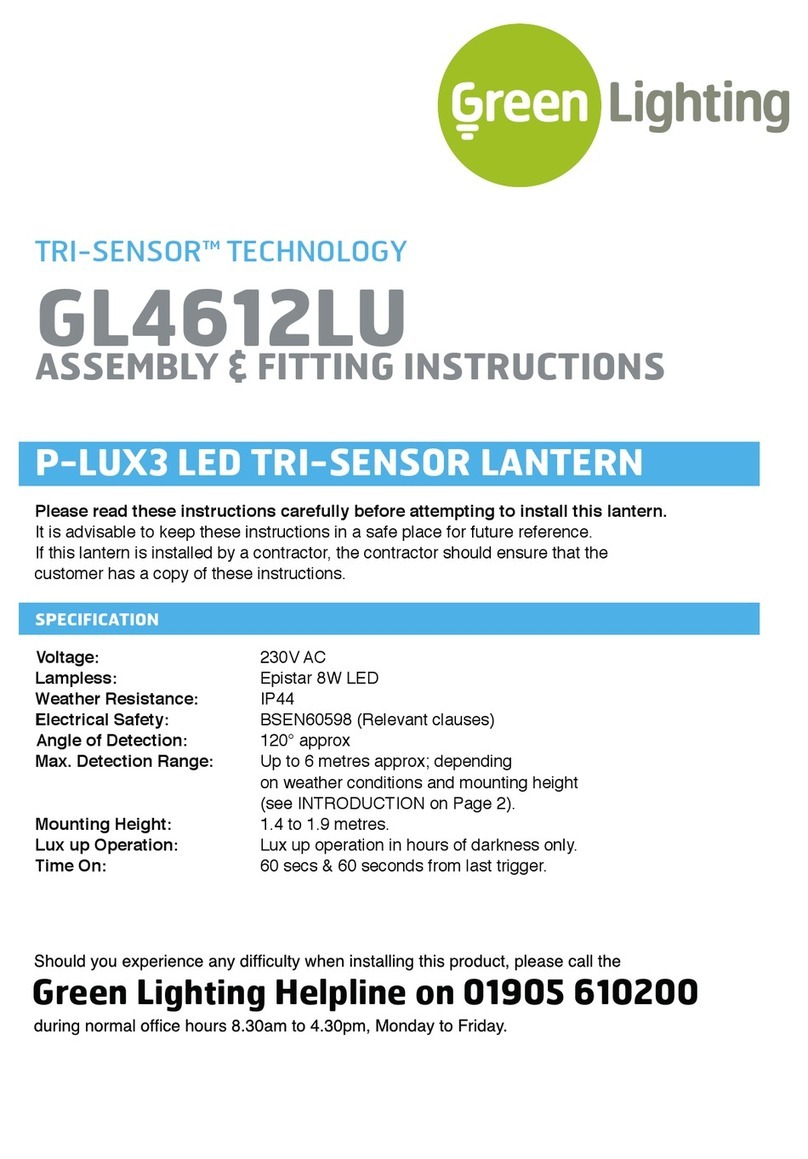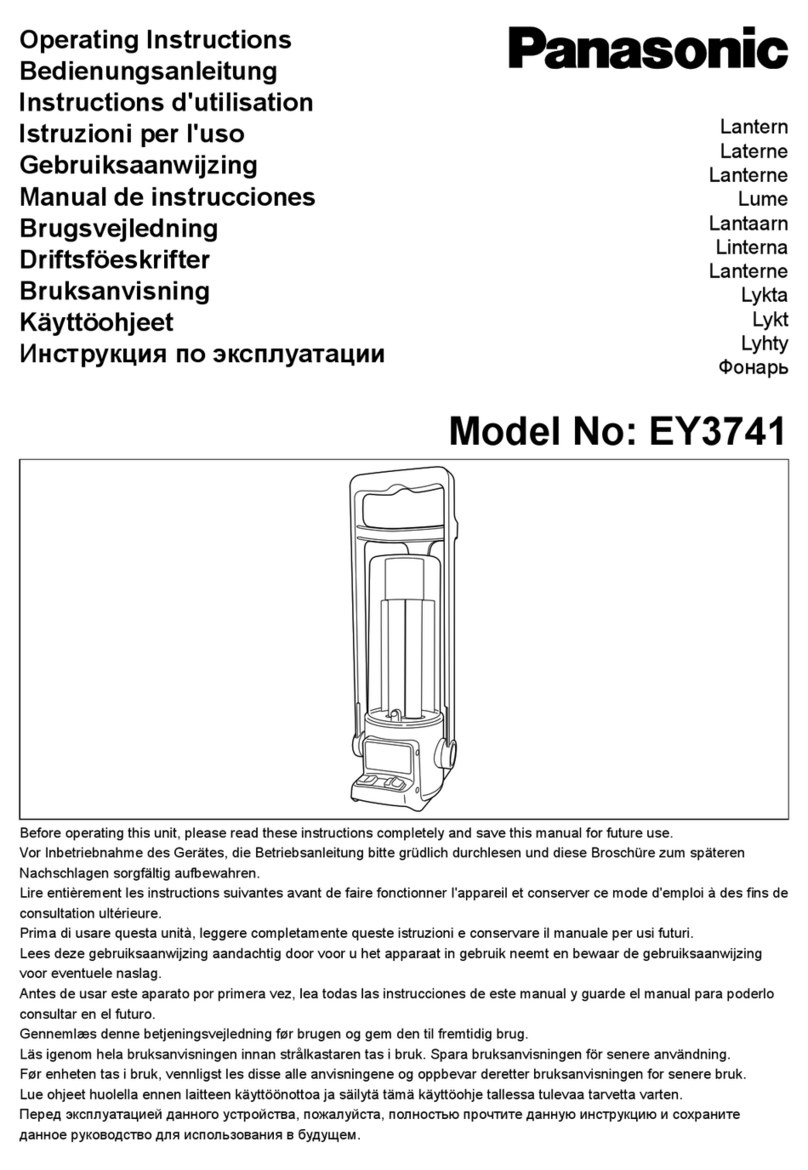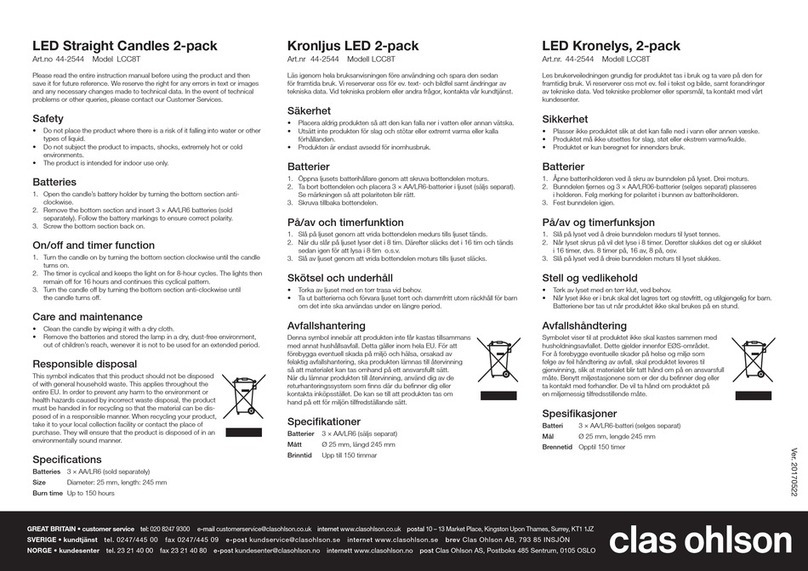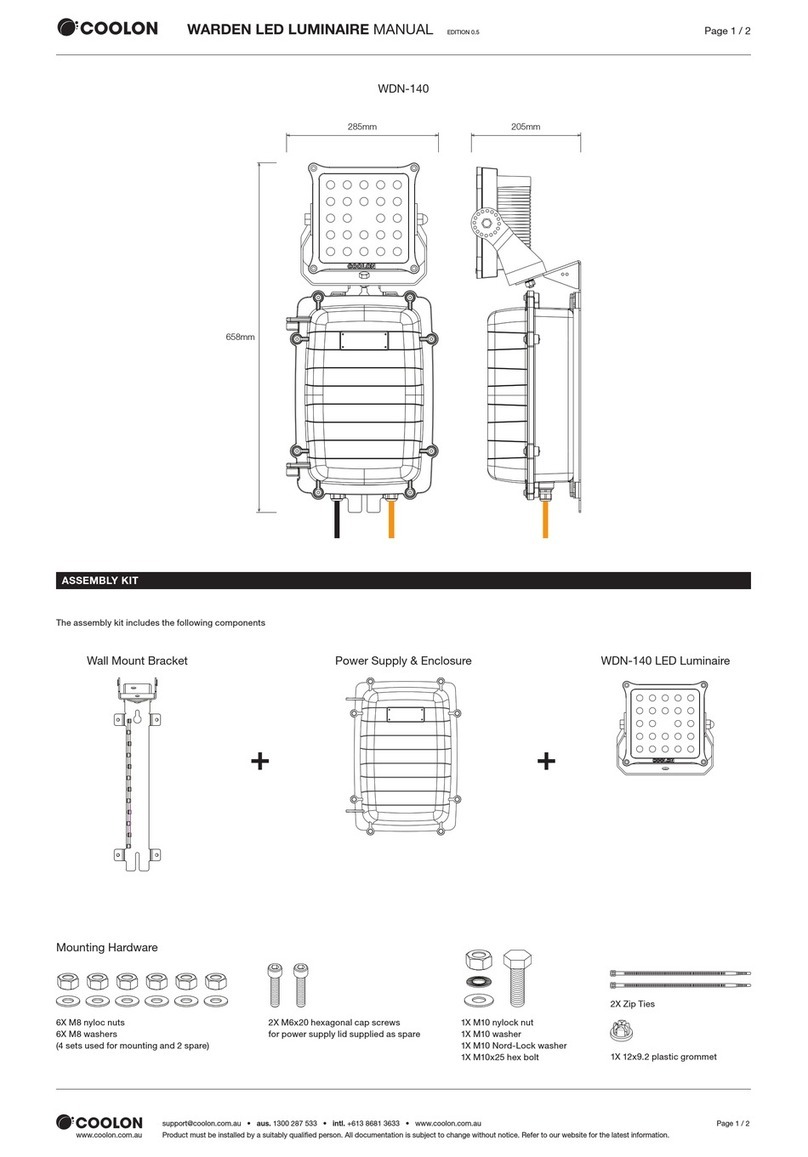
INS #
IB505067EN AtLite
Installation Instructions for the AtLite ATLEM1002HR16SD/ATLEM2002HR14SD/
ATLEM3002HR10SD Emergency Light
WARNING
Risk of Fire/Electric Shock
If not qualified, consult an electrician.
WARNING
Risk of Electric Shock
Disconnect power at fuse or circuit breaker before
installing or servicing.
IMPORTANT SAFEGUARDS
WHEN USING ELECTRICAL EQUIPMENT, BASIC SAFETY
PRECAUTIONS SHOULD ALWAYS BE OBSERVED INCLUDING
THE FOLLOWING.
READ AND FOLLOW ALL
SAFETY INSTRUCTIONS
1. Do not use outdoors.
2. Do not use in hazardous locations, or near gas or electric
heaters.
3. Do not let power supply cords touch hot surfaces.
4. Do not use this equipment for other than the intended use.
5. Installation is to be performed only by qualified personnel.
6. Install in accordance with National Electric Code and local
regulatory agency requirements.
7. The use of accessory equipment not recommended by the
manufacturer may cause an unsafe condition.
8. Equipment should be mounted in locations and at heights
where it will not readily be subjected to tampering by
unauthorized personnel.
SAVE THESE
INSTRUCTIONS
MAX MOUNTING HEIGHT: 27.6 ft.
INSTALLATION
1. De-energize the circuit at the junction box (J-box) where
the emergency light is to be installed.
2. Open the emergency light by removing the sheet metal
screw from the bottom of the fixture, then tipping the
cover up off of the backplate (See Fig. 1).
3. To mount to a junction box - Knock out the appropriate
mounting pattern and the wire pass hole in the backplate
to fit the J-box being used.
4. To mount using conduit, mount the backplate to the wall
in the desired location. Attach a conduit hub to whichever
of the three conduit mount points on the backplate is most
convenient. (see Fig. 2) Remove the corresponding U shaped
cover from the housing by wiggling it back and forth until it
breaks free. (see Fig. 3)
NOTE: A fourth conduit mount location is available on the
bottom surface of the housing, but it can only be used with
flex conduit.
5. Once the backplate is secured, the housing can be held in
place during installation using the EZ Hang feature. (Fig. 2)
6. Connect incoming ground to the green ground wire.
7. Connect the incoming wires to the fixture’s power supply
wires using the wire nuts provided. Connect the white
wire to neutral. Connect the black wire to the hot
lead. The ATLEM1002HR16SD / ATLEM2002HR14SD /
ATLEM3002HR10SD uses a universal input power supply that
will accept from 120-277VAC (see Schematic).
8. Determine the incoming voltage, and select the appropriate
jumper for the brownout circuit (see Schematic). Because
of the universal input of the ATLEM1002HR16SD /
ATLEM2002HR14SD / ATLEM3002HR10SD, the battery
charger will continue to function if voltage sags, even if
the normal power lights in the area fail. Selecting the
appropriate incoming voltage sets the voltage threshold for
the brownout circuit, so that the emergency lights will come
on if voltage sags. The fixture ships with the circuit set to
120V.
9. LED remotes can be connected using the violet (+) and yellow
(-) wires. See schematic.
10.Replace the housing onto the backplate. Secure the backplate
with the sheet metal screw.
11. Remove EZ Key to connect the battery. Battery will not
charge with the EZ Key in place.
12.Energize AC supply.The test button should illuminate, and
the LED heads will illuminate briefly when the test button is
pushed.
13.Adjust remote heads (not included) as needed.
14.Allow 24 hours for batteries to charge.
15.If the fixture is to be powered down for an extended period
after initial installation, replace the EZ Key. This will prevent
the battery from discharging when AC power is removed.
However, it will also prevent the battery from charging when
AC power is restored, so it must be removed once the unit is
ready for regular operation.

